Decorating your home doesn’t have to come at the expense of the environment or your budget. Eco-friendly DIY decor projects allow you to create beautiful, personalized pieces while reducing waste and environmental impact. These sustainable approaches to home decoration transform discarded materials into functional art that reflects your values and creativity.
From repurposing everyday items like pallets and mason jars to crafting with natural fibers and reclaimed wood, sustainable decorating offers endless possibilities for every room in your home. You can create stunning lighting fixtures, storage solutions, textile accents, and plant displays using materials that might otherwise end up in landfills. These projects not only help you develop new skills but also result in unique pieces that tell a story while contributing to a more sustainable lifestyle.
1) Upcycled Pallet Coffee Table
Transform discarded wooden pallets into a stunning coffee table that adds rustic charm to your living room. This project saves materials from landfills while creating functional furniture at a fraction of retail costs.
Start by selecting pallets in good condition without damage or rot. Clean them thoroughly and sand rough surfaces smooth. You can leave the wood natural or apply stain for a polished finish.
The basic design involves stacking two pallets and securing them together with screws. Add caster wheels underneath for mobility, or attach hairpin legs for a modern industrial look.
Consider adding a glass top for a sleeker appearance and easier cleaning. You can also insert LED strip lights between slats to create ambient lighting for evening entertainment.
Storage becomes effortless when you utilize the natural gaps between pallet boards. Slide books, magazines, or remote controls into these convenient spaces.
This eco-friendly project typically takes one weekend to complete with basic tools. The result is a unique conversation piece that showcases your commitment to sustainable living while adding personality to your space.
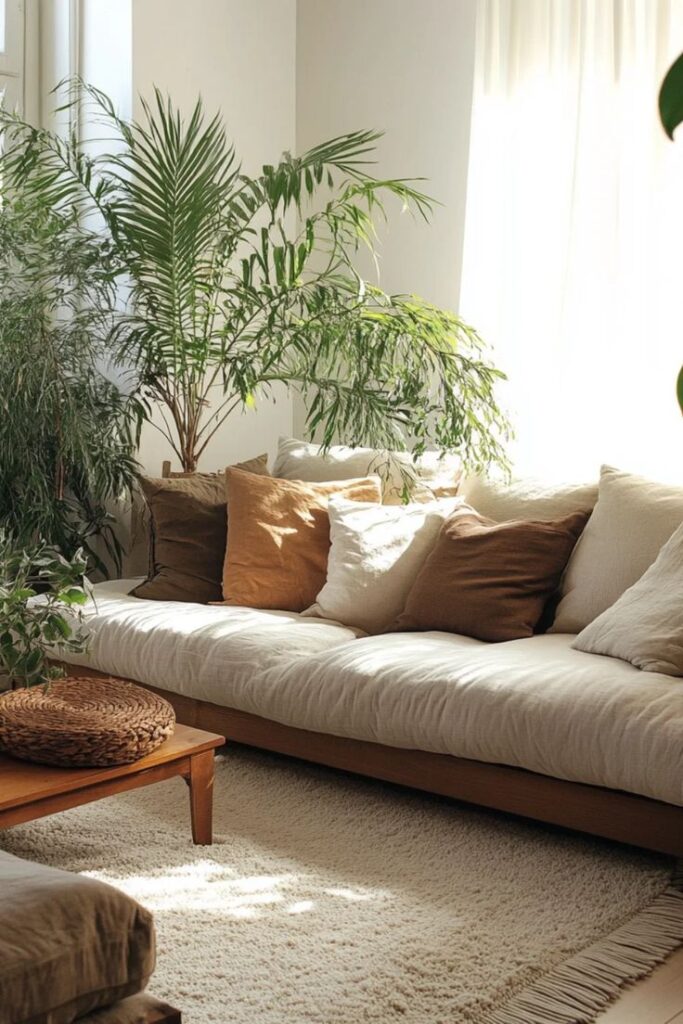

2) Mason jar candle holders
Mason jar candle holders offer a perfect way to create warm, ambient lighting while repurposing glass containers. You can transform old mason jars into charming decorative pieces with minimal effort and cost.
Start by cleaning your mason jars thoroughly. Remove any labels and residue to create a smooth surface for your project.
For a rustic look, wrap twine or burlap around the jar’s neck. You can also add dried flowers, pebbles, or sand inside the jar for extra visual interest before placing your candle.
Simply drop a tea light or small pillar candle into the jar. The glass will safely contain the flame while creating beautiful light patterns around your room.
These holders work well throughout your home. Place them on mantels, dining tables, or outdoor patios for instant atmosphere.
You can customize the jars to match your decor style. Paint them with glass paint, add ribbons, or leave them clear for a minimalist approach.
The versatility of mason jar candle holders makes them suitable for any room. They blend rustic charm with modern elegance while keeping old jars out of landfills.
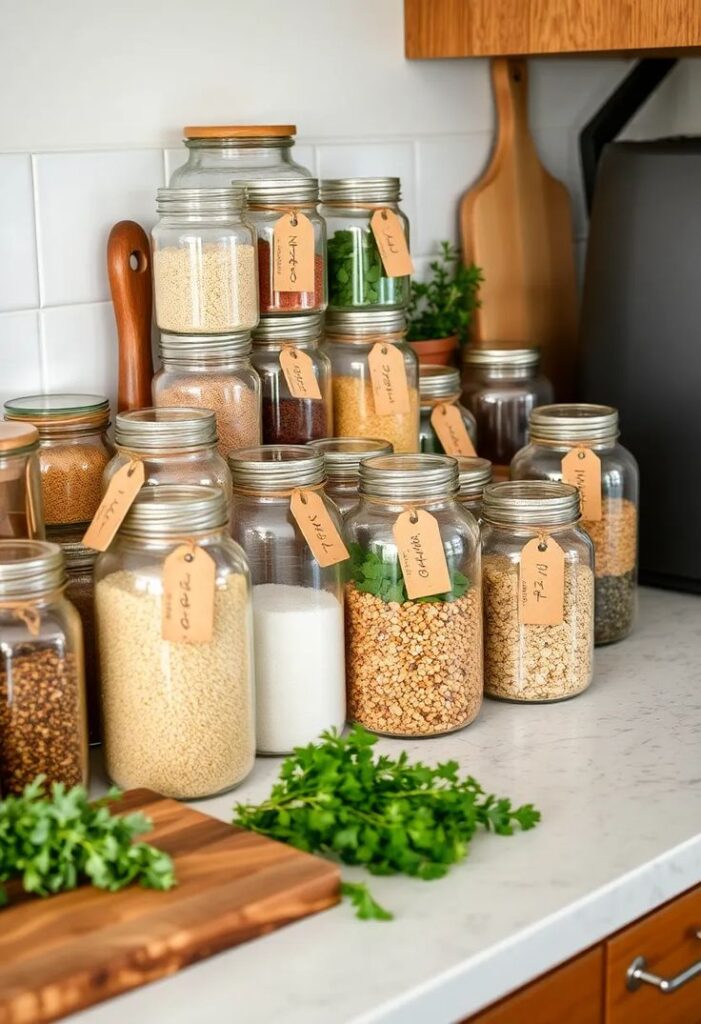
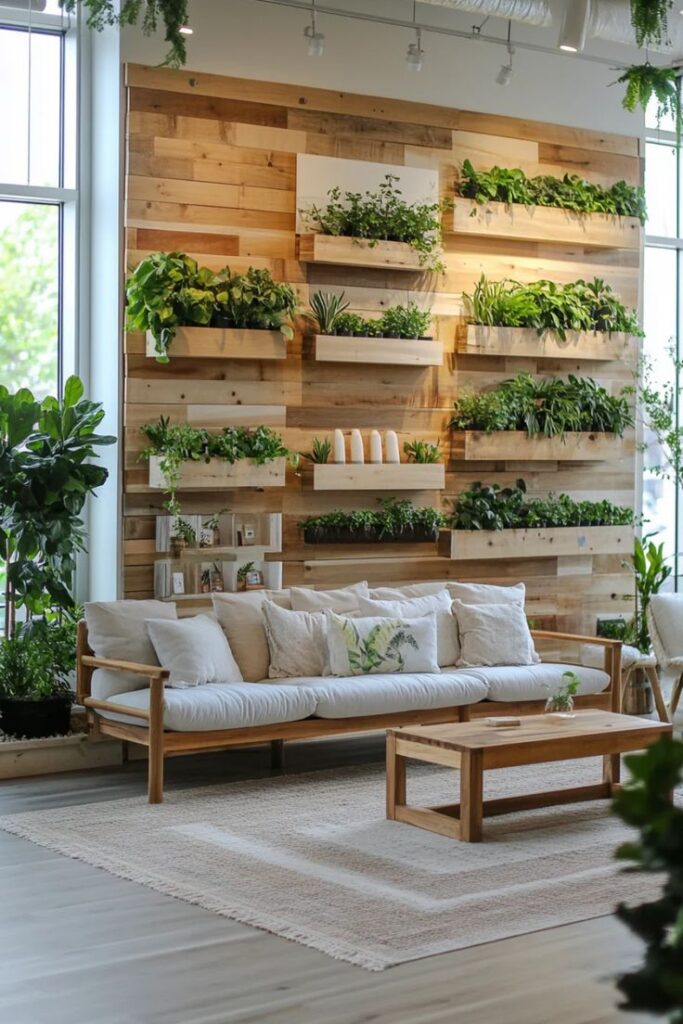
3) Fabric scrap throw pillows
Transform leftover fabric pieces into beautiful throw pillows that add personality to any room. This project reduces textile waste while creating custom décor that matches your style perfectly.
Gather fabric scraps from old clothes, sheets, or curtains you no longer use. You can mix different textures and patterns for a unique patchwork design.
Cut your fabric pieces into squares or rectangles of equal size. Arrange them in a pleasing pattern before sewing them together to create the pillow front.
Sew the pieces with right sides facing each other, leaving a small opening for stuffing. Turn the pillow cover inside out and fill with batting, old pillows, or even more fabric scraps.
You can create round pillows using a color-blocked pattern or stick to traditional square shapes. Mix bold prints with solid colors for visual interest.
These handmade pillows cost much less than store-bought options. They also give new life to materials that might otherwise end up in landfills.
Start with simple designs if you’re new to sewing. As your skills improve, experiment with more complex patterns and decorative stitching techniques.
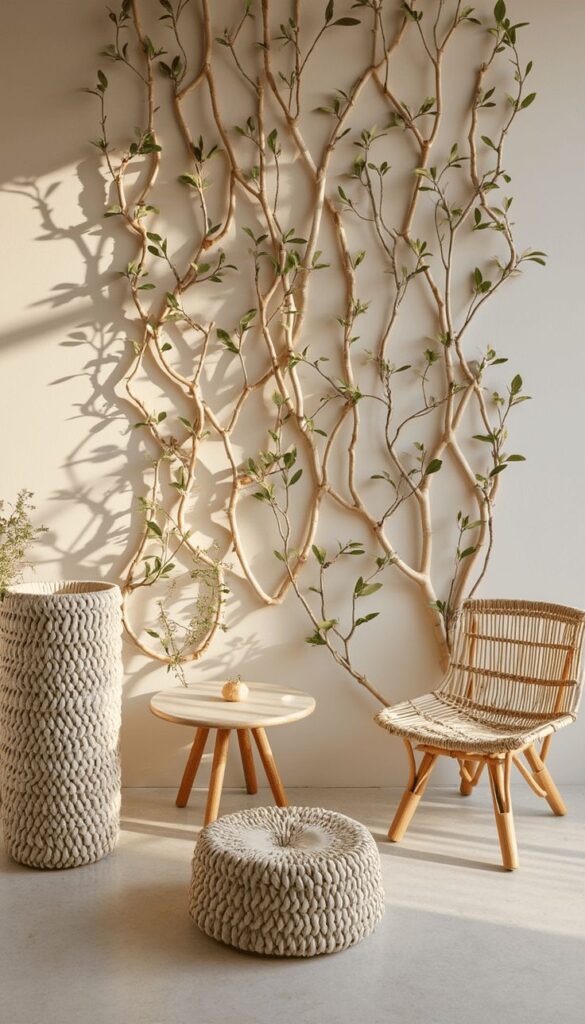
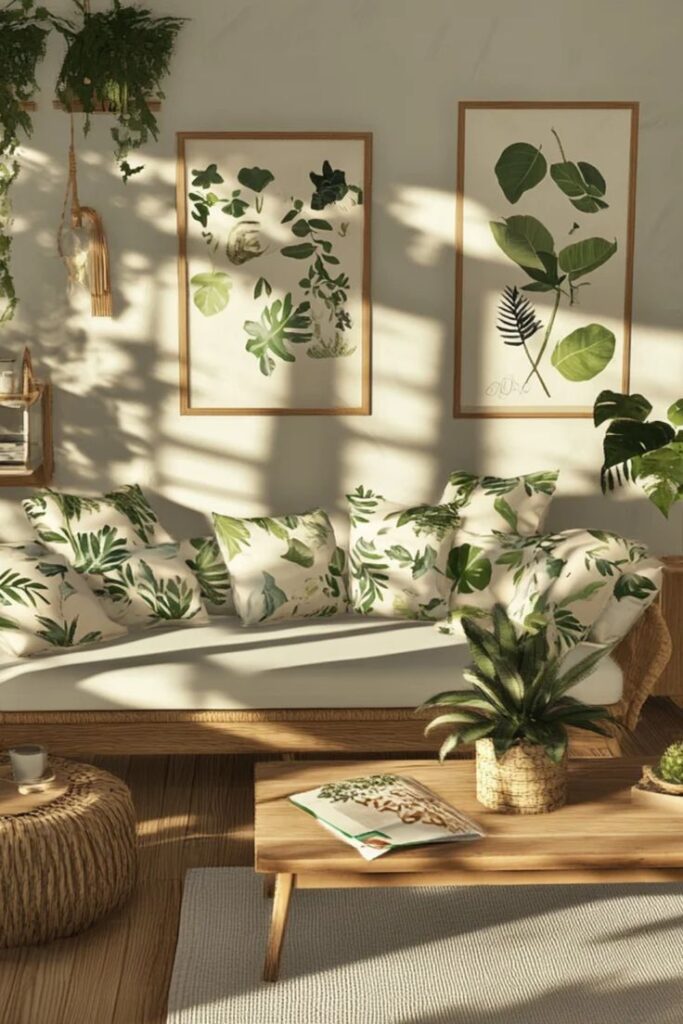
4) Reclaimed wood wall shelves
Reclaimed wood shelves combine function with environmental responsibility. You can create storage solutions while reducing waste from old barns, factories, and demolished structures.
Each piece of salvaged wood carries unique character marks. Weather patterns, nail holes, and natural aging create one-of-a-kind textures that mass-produced shelves cannot replicate.
You’ll find reclaimed wood at salvage yards, construction sites, and online marketplaces. Look for pieces without rot, excessive warping, or structural damage that could compromise shelf safety.
Sand your chosen boards to remove splinters while preserving their rustic appearance. Apply food-safe finishes if you plan to store dishes or kitchen items on your shelves.
Mount reclaimed wood shelves using sturdy brackets rated for the weight you plan to display. Check wall studs for secure installation, especially with heavier salvaged lumber.
These shelves work well in kitchens, bathrooms, living rooms, and home offices. Their organic appearance contrasts beautifully with modern fixtures and clean lines.
Your reclaimed wood shelves reduce demand for newly harvested timber. This simple DIY project transforms discarded materials into functional storage while adding warmth to any room.
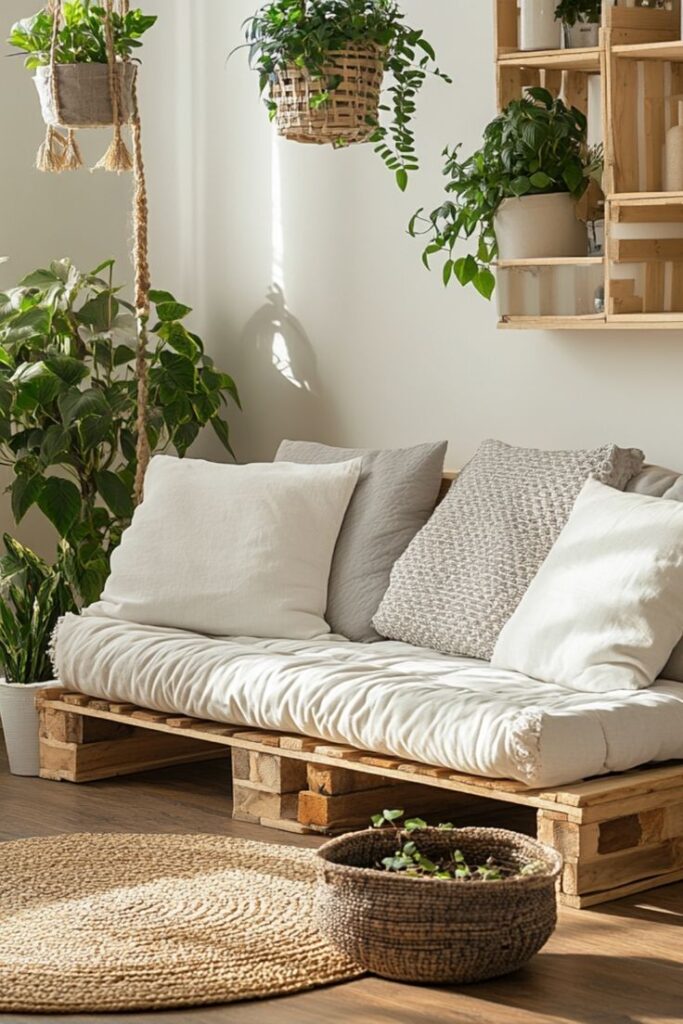
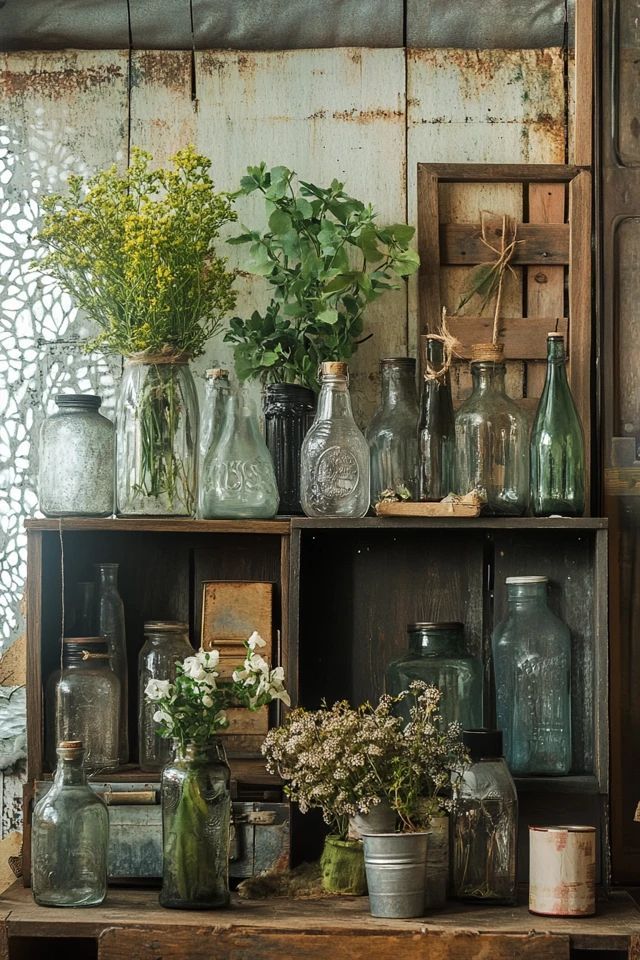
5) Glass bottle pendant lights
You can create stunning pendant lights from old glass bottles with just a few simple supplies. This project transforms waste into beautiful lighting fixtures that add character to any room.
Choose bottles in colors that match your decor style. Wine bottles work particularly well for this craft. You’ll need pendant light fixtures with thin wires that can thread through the bottle openings.
Start by selecting a pendant light kit with one or multiple lights. Black three-light pendants hanging from a single mount are popular choices. Any style works as long as the wiring fits through your bottles.
The process involves carefully threading the light wires through the bottle tops. This creates unique lighting that brings both function and visual interest to kitchens, dining areas, or patios.
These upcycled pendant lights offer an eco-friendly lighting solution. They work especially well in spaces with industrial or rustic design themes. The bottles create interesting light patterns and shadows on surrounding surfaces.
You can customize the look by mixing different bottle colors or using matching sets. This DIY project saves money while reducing waste and creating one-of-a-kind lighting for your home.
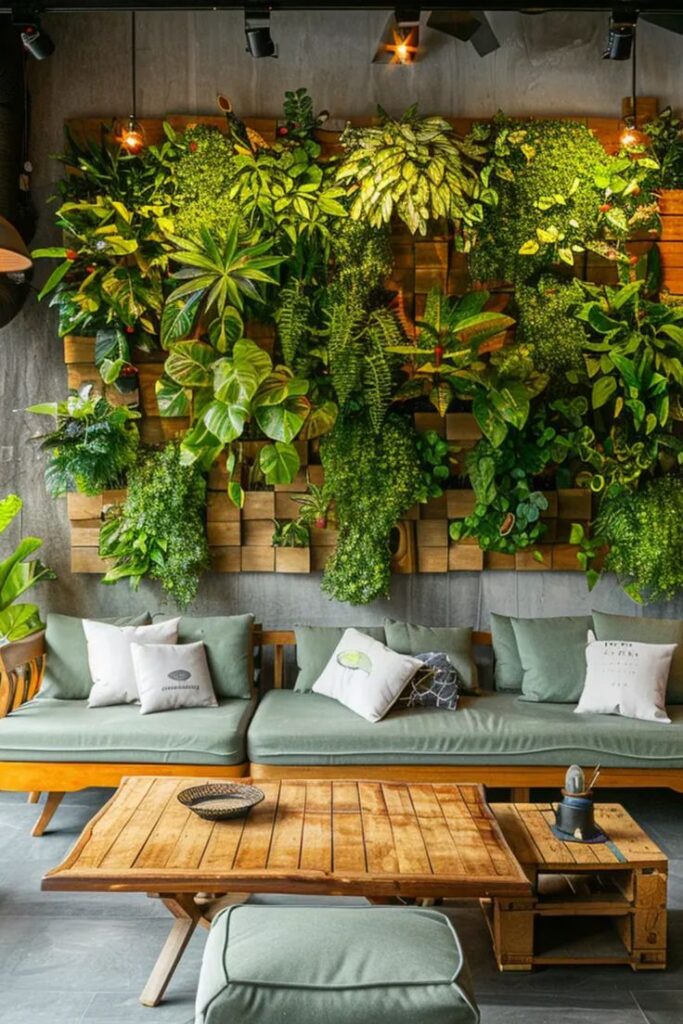
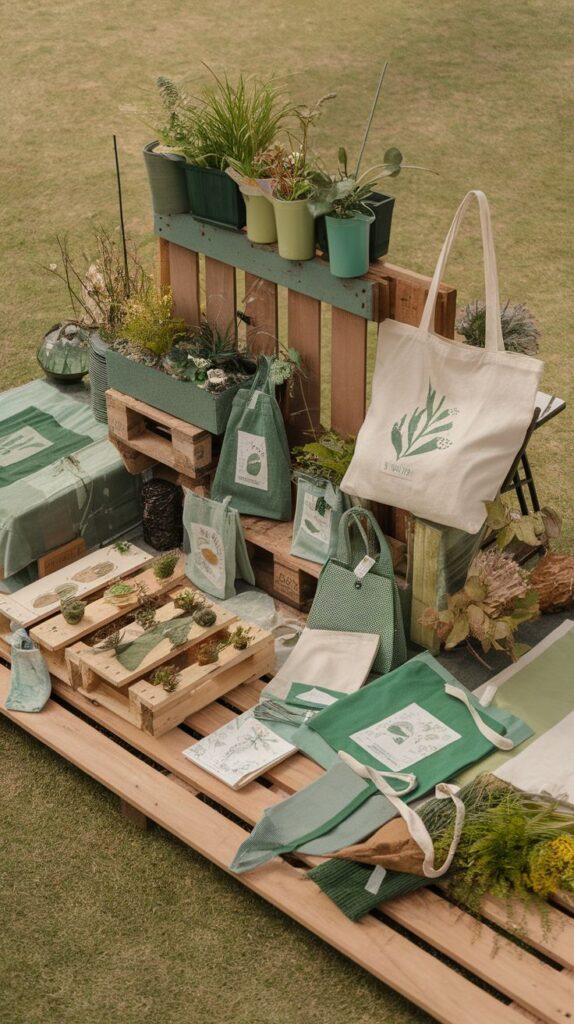
6) Macramé plant hangers with recycled cotton
Macramé plant hangers offer a perfect blend of style and sustainability for your home. Using recycled cotton cord transforms what would be waste into beautiful functional art.
You can create stunning bohemian-style hangers that showcase your plants while reducing environmental impact. Recycled cotton feels softer than traditional materials and comes in natural tones that complement any decor.
The basic technique involves learning simple knots like square knots and gathering knots. Start with a four-cord design for beginners, which creates a classic diamond pattern perfect for small to medium plants.
This craft costs a fraction of store-bought alternatives. An afternoon project can produce a professional-looking hanger that rivals expensive retail versions.
Choose recycled cotton in natural colors for a minimalist Nordic aesthetic. Add wooden beads made from sustainable sources to enhance the eco-friendly appeal.
Your finished hangers work beautifully near windows where plants receive optimal light. The textured rope adds visual interest while keeping your space organized and green.
This sustainable craft lets you personalize your living space while supporting environmental responsibility. Each hanger represents a small step toward more conscious home decorating.
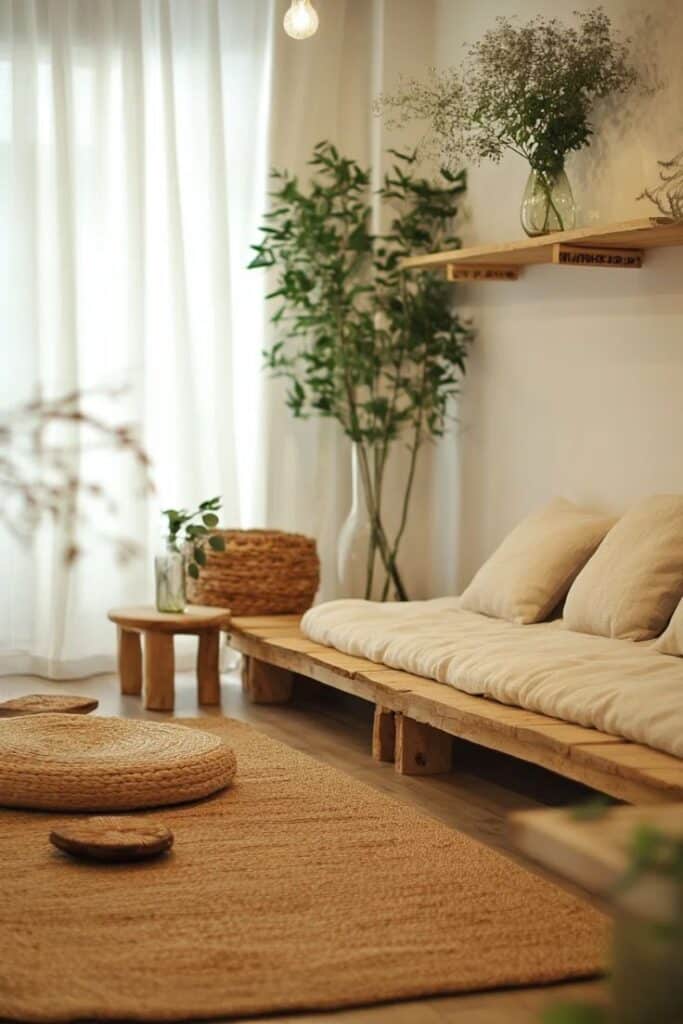
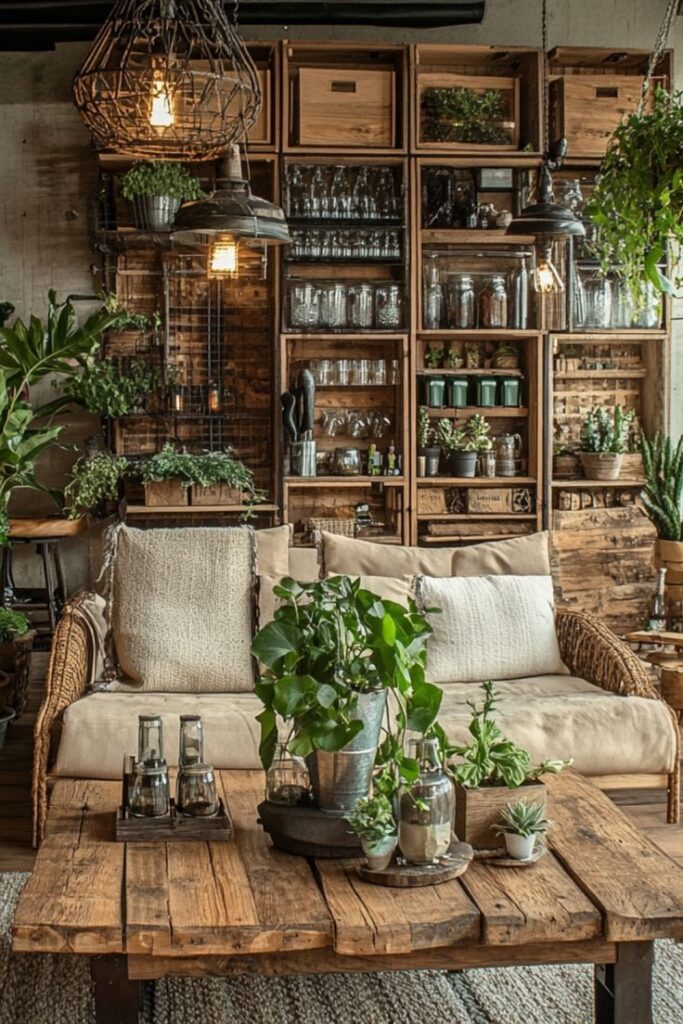
7) DIY cork board from wine corks
Transform your leftover wine corks into a functional and stylish cork board. This eco-friendly project gives new life to materials that would otherwise end up in the trash.
You’ll need wine corks, a picture frame, and some basic adhesive. Old frames work perfectly for this project, making it even more sustainable.
Start by removing the glass and backing from your chosen frame. Clean the frame thoroughly and let it dry completely.
Arrange your wine corks in the frame opening to plan your design. You can create patterns or simply place them randomly for a rustic look.
Apply strong craft glue to the back of each cork and press firmly into place. Work in small sections to ensure proper adhesion.
Let the glue dry for several hours before handling. Once complete, you’ll have a charming bulletin board perfect for notes, photos, and reminders.
This project typically takes about an hour to complete. The natural texture of cork adds warmth to any room while providing a practical organizational tool.
Your finished cork board combines sustainability with functionality, turning wine memories into useful home decor.
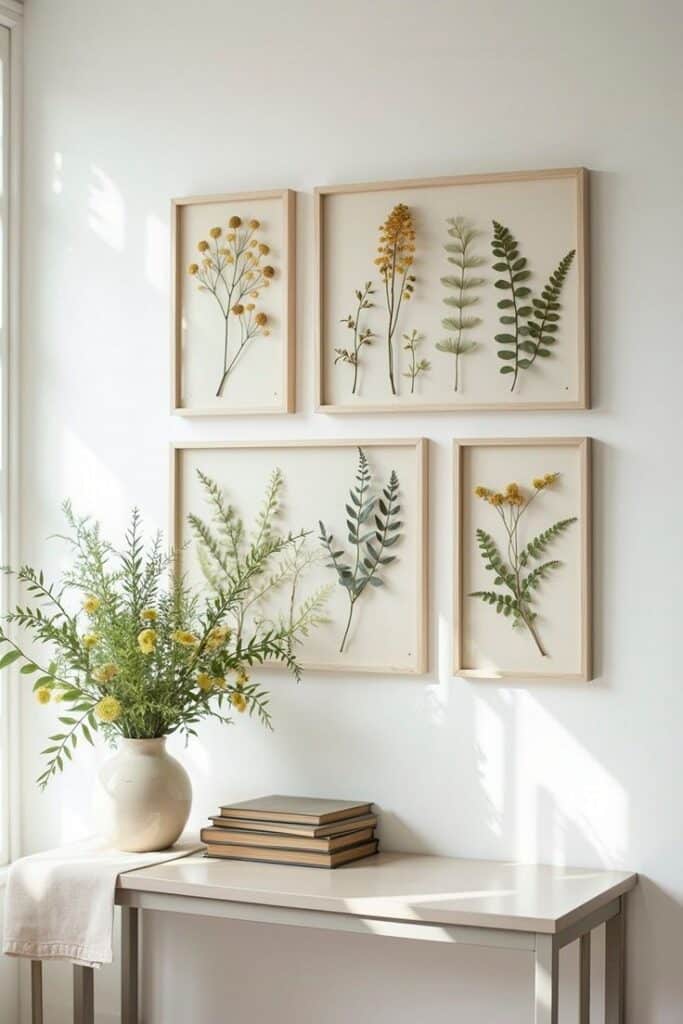
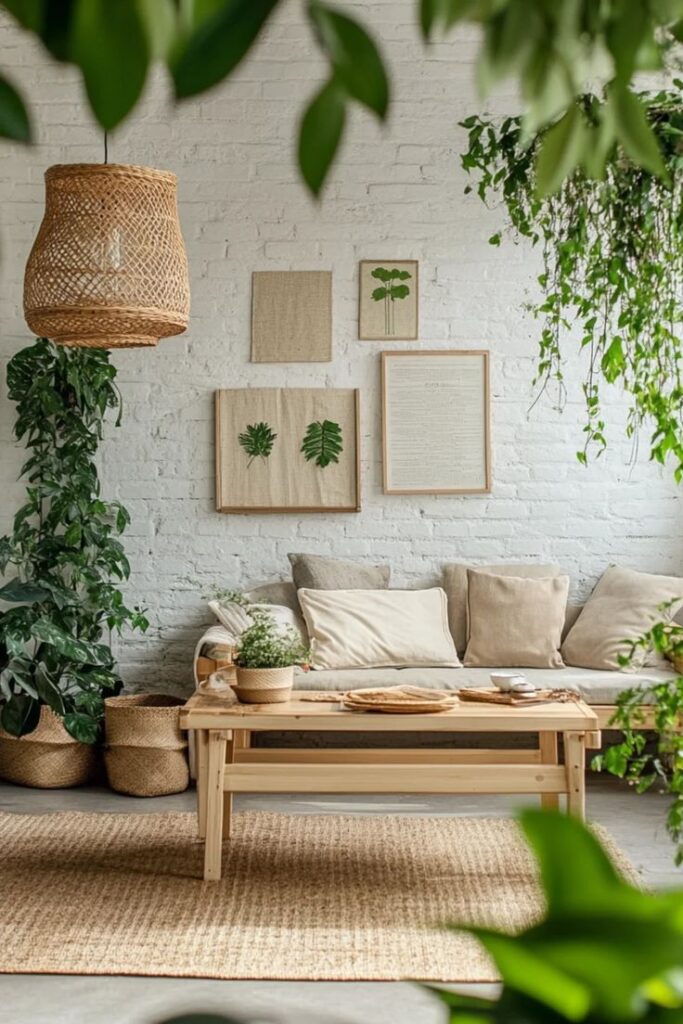
8) Hand-painted terracotta pots
Transform plain terracotta pots into personalized eco-friendly decor pieces with just some paint and creativity. These clay vessels are naturally sustainable and biodegradable, making them perfect for environmentally conscious decorating.
You can create stunning designs using non-toxic acrylic paints or natural pigments. Try geometric patterns, botanical motifs, or simple color blocking for a modern look.
Hand-painted pots work beautifully for both indoor plants and outdoor gardens. They add instant personality to your green spaces while supporting your eco-friendly lifestyle.
The best part is how affordable this project is. You’re giving new life to basic terracotta pots instead of buying expensive decorative planters.
Start with clean, dry pots and apply a base coat if desired. Then paint your chosen design using brushes or sponges for different textures.
These painted pots make thoughtful handmade gifts too. You can customize colors and patterns to match anyone’s home decor style.
Let your painted pots dry completely before adding plants. Your unique creations will brighten any room while showcasing your personal artistic flair.

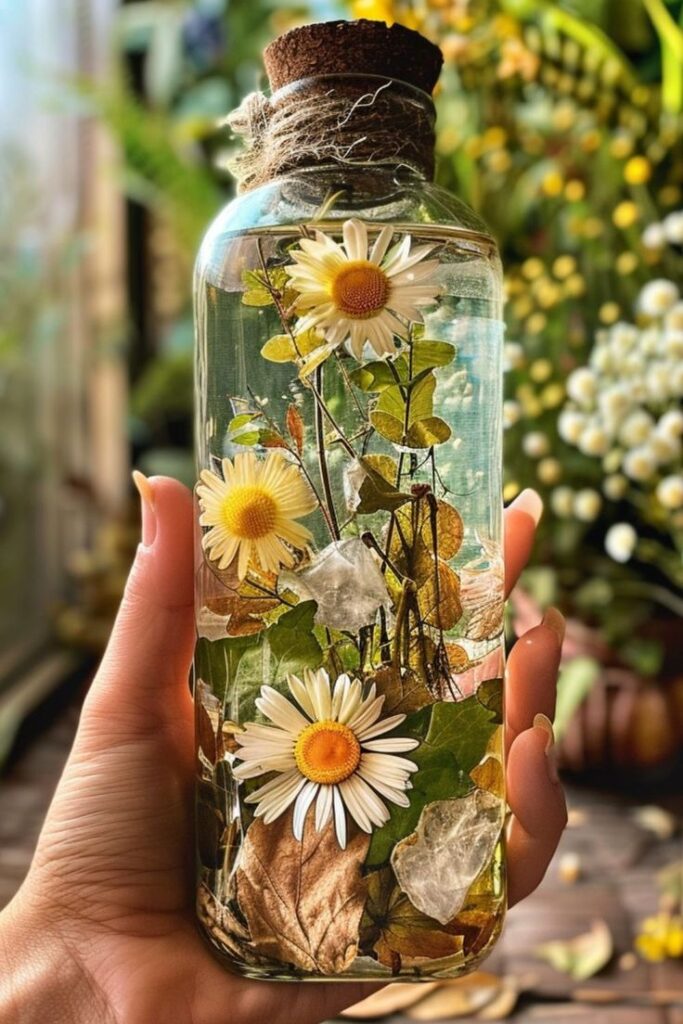
9) Repurposed ladder bookshelf
Old wooden ladders make excellent eco-friendly bookshelves with minimal effort. You can find vintage ladders at thrift stores, garage sales, or in your own storage.
Start by cleaning and sanding your ladder to remove any rough spots. Paint or stain it to match your room’s decor, or leave it natural for rustic charm.
Measure the space between each rung carefully. Cut wooden boards or reclaimed planks to fit snugly between the ladder steps as shelves.
Secure the boards with brackets or screws from underneath for stability. Make sure each shelf can support the weight of your books and decorative items.
You can lean the ladder against a wall or mount it securely for safety. Corner placements work particularly well and maximize your floor space.
This project transforms waste into functional storage while adding unique character to your home. The ladder’s original purpose as a climbing tool creates an interesting visual element.
Your new bookshelf works well for displaying books, plants, picture frames, or collectibles. The vertical design draws the eye upward and makes rooms appear taller.
10) Natural fiber woven rugs
You can create beautiful eco-friendly rugs using natural materials like jute, sisal, hemp, or seagrass. These fibers are renewable and biodegradable, making them perfect for sustainable home decor.
Start by gathering your chosen natural fiber rope or strips. Jute works well for beginners because it’s flexible and affordable.
Create a simple woven pattern by laying parallel strips in one direction, then weaving perpendicular strips over and under them. Secure the edges with natural cotton thread or hemp cord.
For a braided approach, take three thick strands of natural fiber and braid them into long sections. Coil these braided sections into a circular or oval shape, stitching them together as you go.
You can leave your rug in its natural color or dye it with plant-based dyes for added character. Natural fiber rugs add warmth and texture to any room while keeping your environmental impact low.
These handmade rugs are durable and can handle high-traffic areas. When they eventually wear out, they’ll decompose naturally instead of sitting in landfills like synthetic alternatives.
Benefits of Eco-Friendly DIY Decor
Choosing eco-friendly DIY decor reduces environmental waste while saving significant money on home improvements. These projects also unlock your creative potential by transforming everyday materials into unique decorative pieces.
Environmental Impact
When you create eco-friendly DIY decor, you directly reduce waste going to landfills. Upcycling materials like glass jars, fabric scraps, and reclaimed wood keeps these items in use longer.
Your projects cut down on manufacturing demand for new products. This reduces the carbon footprint associated with producing, packaging, and shipping mass-produced home decor items.
Natural materials you choose for DIY projects are biodegradable. Unlike synthetic decorations that persist in the environment for decades, materials like wood, cotton, and bamboo break down naturally.
You also minimize harmful chemicals in your home. Many commercial decor items contain volatile organic compounds (VOCs) and synthetic materials that release toxins into indoor air.
Cost Savings
DIY eco-friendly decor costs significantly less than buying new items. You can create a rustic coffee table from reclaimed wood for under $30, while similar store-bought pieces cost $200 or more.
Repurposing existing materials eliminates purchase costs entirely. Old t-shirts become braided rugs, wine bottles transform into vases, and cardboard boxes turn into storage solutions.
Your projects use basic tools and supplies you likely already own. Scissors, glue, sandpaper, and paint are the primary materials needed for most eco-friendly DIY projects.
Long-term savings multiply when you maintain and repair items instead of replacing them. Learning DIY skills helps you extend the life of furniture and decor pieces.
Personal Creativity
Eco-friendly DIY projects let you design decor that matches your exact style preferences. You control colors, textures, and sizes to fit your space perfectly.
Working with recycled materials challenges your problem-solving skills. Each project requires you to think creatively about how to transform ordinary items into functional art.
Hands-on crafting provides stress relief and mental satisfaction. The process of creating something beautiful from discarded materials offers a sense of accomplishment that buying ready-made items cannot match.
Your finished pieces become conversation starters with unique stories. Guests appreciate hearing about how you transformed old materials into beautiful home accessories.
Tips for Sourcing Sustainable Materials
Successfully sourcing eco-friendly materials requires knowing where to look and what to prioritize. Focus on recycled products, local suppliers, and safety standards to ensure your DIY projects meet environmental and health goals.
Choosing Recycled Products
Start by identifying products with post-consumer recycled content rather than pre-consumer waste. Post-consumer materials have completed their original purpose and offer greater environmental benefits.
Look for certification labels like FSC (Forest Stewardship Council) for wood products and GREENGUARD for low-emission materials. These certifications verify environmental claims and product quality.
Check product packaging for recycled content percentages. Materials with 70% or higher recycled content provide the most environmental impact.
Common recycled materials for DIY projects:
- Reclaimed wood from old buildings
- Recycled glass containers and bottles
- Metal fixtures from salvage yards
- Fabric scraps from textile manufacturers
- Cork from wine bottle stoppers
Avoid products labeled as “recyclable” when you need “recycled” materials. Recyclable means the item can be recycled later, not that it contains recycled content.
Finding Local Suppliers
Search for architectural salvage yards in your area for unique reclaimed materials. These businesses specialize in rescued building materials like doors, windows, and lumber.
Contact local construction companies about surplus materials from renovation projects. Many contractors discard usable wood, tiles, and fixtures that work perfectly for DIY projects.
Visit fabric stores and upholstery shops for textile remnants and sample books. These businesses often sell or donate fabric scraps at reduced prices.
Check Facebook Marketplace and Craigslist for individuals selling leftover project materials. This approach reduces transportation emissions and supports your local economy.
Join community groups focused on material reuse and zero waste. Members frequently share information about free or low-cost sustainable materials.
Safety Considerations
Test older materials for lead paint and asbestos before using them indoors. Materials from buildings constructed before 1980 require professional testing for safety.
Verify that recycled materials meet current fire safety codes for your intended use. Some reclaimed materials may not comply with modern safety standards.
Essential safety gear for material preparation:
- Dust masks when sanding or cutting
- Safety glasses for all cutting operations
- Work gloves for handling rough materials
- Ventilation fans when using adhesives
Clean all reclaimed materials thoroughly before installation. Remove dirt, old adhesives, and potential contaminants using appropriate cleaning methods.
Research VOC (Volatile Organic Compound) levels in recycled products. Choose materials with low or zero VOC emissions to maintain healthy indoor air quality.






